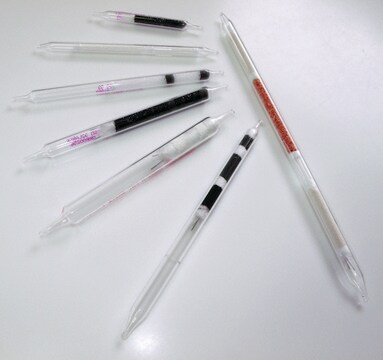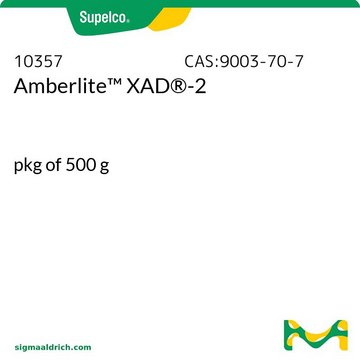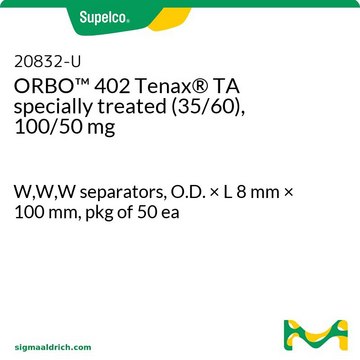20254-U
ORBO™ 101 Carbotrap® B (20/40), 100/50 mg
W,W,W separators, O.D. × L 6 mm × 70 mm, pkg of 25 ea
Synonym(e):
ORBO™ Carbotrap® Röhrchen
About This Item
Empfohlene Produkte
Materialien
W,W,W separators
Qualitätsniveau
Produktlinie
ORBO™
Zusammensetzung
Bed A, 100 mg
Bed B, 50 mg
Verpackung
pkg of 25 ea
Hersteller/Markenname
ORBO™ 101
Methode(n)
active air sampling: suitable
AD × L
6 mm × 70 mm
Matrix
Carbotrap® B Graphitized Carbon Black (GCB) (20/40)
Partikelgröße
20-40 mesh
Anwendung(en)
air monitoring
environmental
industrial hygiene
Suchen Sie nach ähnlichen Produkten? Aufrufen Leitfaden zum Produktvergleich
Verwandte Kategorien
Allgemeine Beschreibung
Rechtliche Hinweise
Lagerklassenschlüssel
11 - Combustible Solids
WGK
nwg
Flammpunkt (°F)
Not applicable
Flammpunkt (°C)
Not applicable
Hier finden Sie alle aktuellen Versionen:
Analysenzertifikate (COA)
It looks like we've run into a problem, but you can still download Certificates of Analysis from our Dokumente section.
Wenn Sie Hilfe benötigen, wenden Sie sich bitte an Kundensupport
Besitzen Sie dieses Produkt bereits?
In der Dokumentenbibliothek finden Sie die Dokumentation zu den Produkten, die Sie kürzlich erworben haben.
Unser Team von Wissenschaftlern verfügt über Erfahrung in allen Forschungsbereichen einschließlich Life Science, Materialwissenschaften, chemischer Synthese, Chromatographie, Analytik und vielen mehr..
Setzen Sie sich mit dem technischen Dienst in Verbindung.





